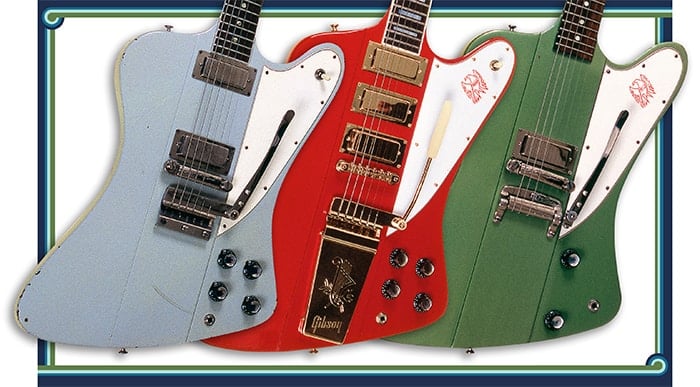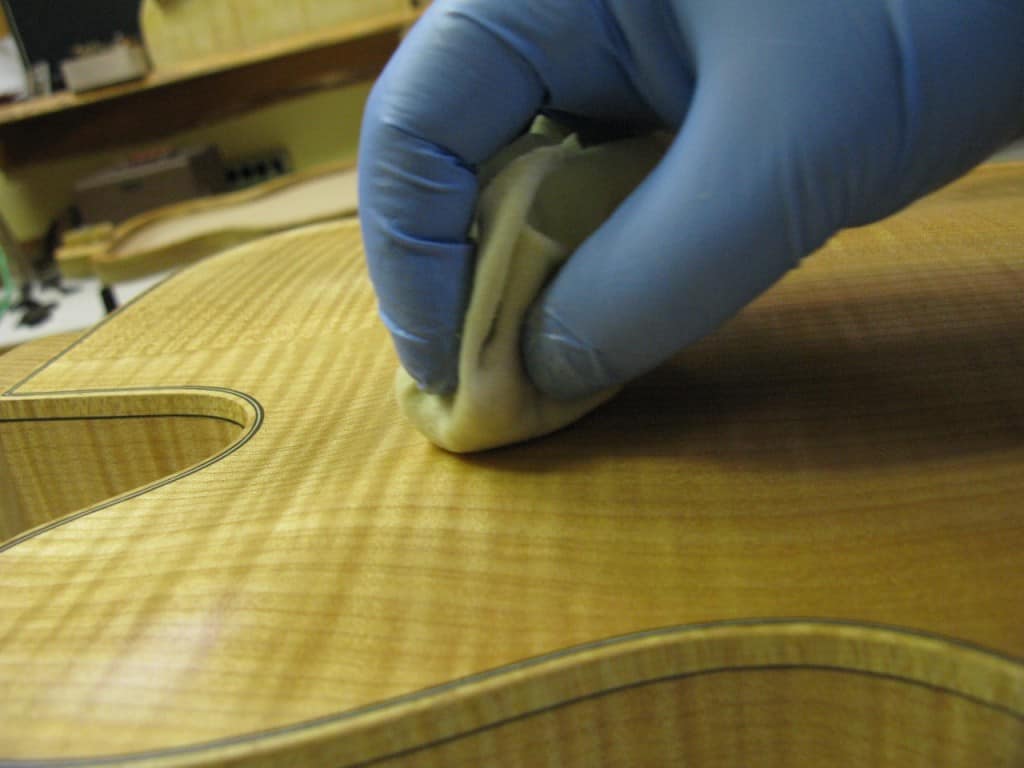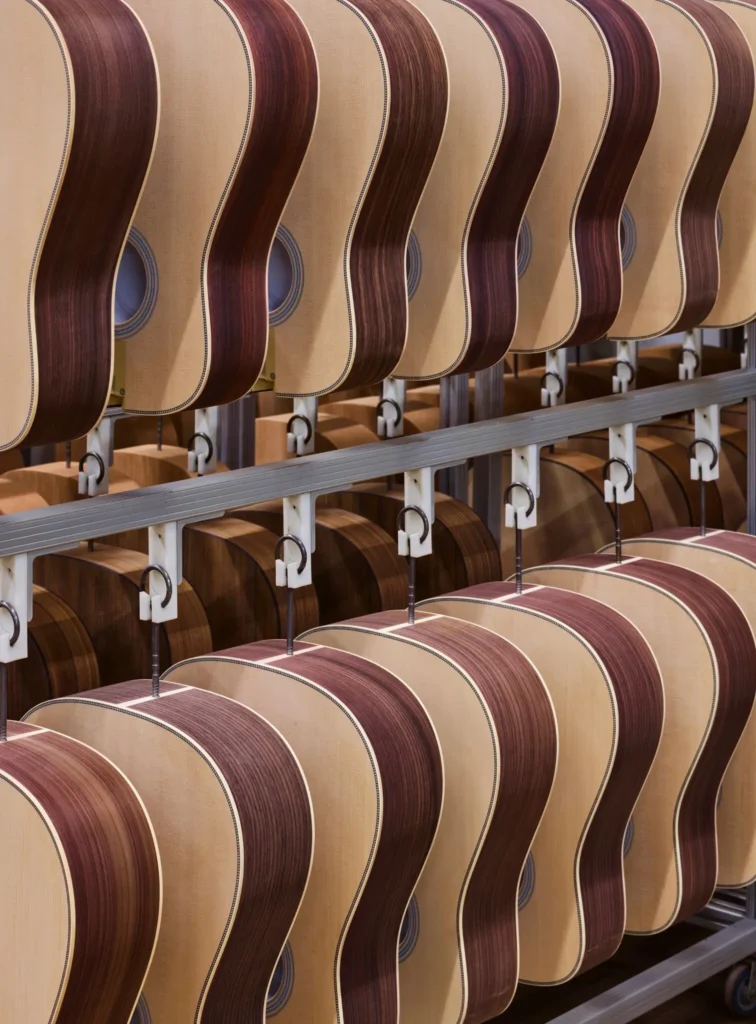Gibson unlike Fender did not easily adopt the concept of offering custom color finishes. It was not contrary to personalized work or colorful finishes, but I saw them more as a result of its wide range of string instruments: acoustic, electric and other instruments.
While competitors such as Fender, Gretsch, Harmony and Rickenbacker did not stop expanding their range of finishes with a multitude of colors, Gibson continued with his (more traditional) strategy. The creation of the Cherry color in Les Paul Special and Junior dates back to the year 58. Factory records indicate that the color was originally used in ’57 only on an ES-295 guitar. Subsequently, the Cherry Red color was available in many Gibson models, either as a standard finish or as an option, before becoming the main color of the new solid and electric SG-style bodies in 1961.
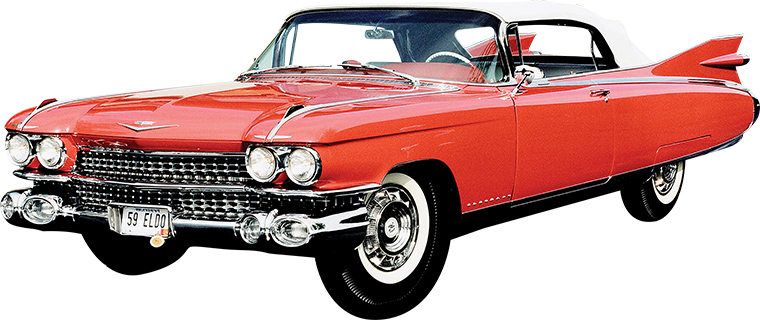
Black and white’s use for decades aside, Gibson’s first non-traditional finish was blue that was applied to the renewed Lap Steel Century of 1951. The most famous finish applied by Gibson in a production model is the GoldTop of the model Les Paul from 1952, who was born at the end of ’51 ES-175 presented by Les Paul himself. Despite its innovative design, the SG series did not provide a decisive competitive advantage, especially in relation to Fender’s most popular solid bodies. When the Firebird was launched in 1963, Gibson’s boss, Ted McCarty, felt compelled to equip the new models with 10 finishing options, blatantly emulating Fender tones. A Gibson color like Golden Myst is strictly identical to Fender’s Shoreline Gold, while Pelham Blue is the successor to Cadillac in 1960 of Lake Placid Blue used by Fender from ’57.
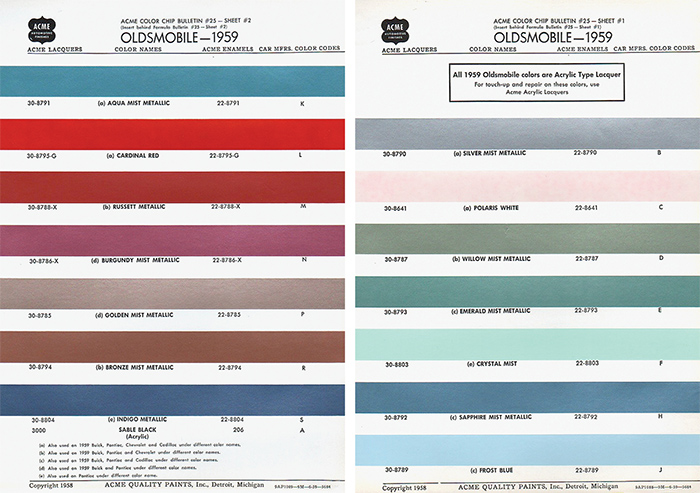
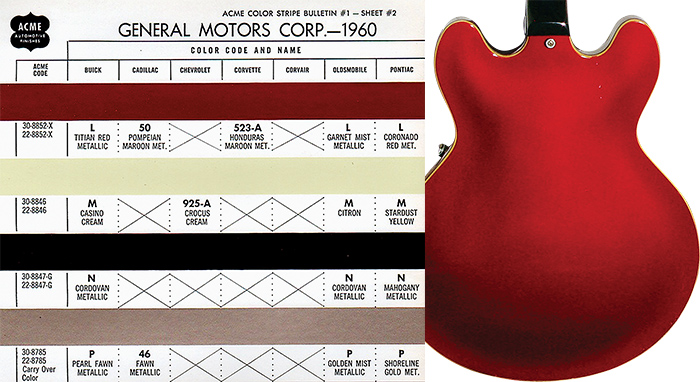
Gibson’s color charts in 1963 and ´66 do not mention the reference numbers of the paintings, but their automotive name is enough to trace their origins (see the attached table). It is not surprising that Gibson’s selection shows an air similar to that of Fender, with nine of the 10 colors originated in GM, only one from Ford. However, its main automotive source was Oldsmobile, with five colors, instead of Fender’s favorite, Cadillac, with three. This gave Gibson similar tones, although with different names. Colors like Pelham Blue and Cardinal Red were available in other Gibsons, either as standard finish or Melody Makers. However, a pair of Firebirds with nuances other than 10 in the table were made. For example, the late John Entwistle, bassist of The Who, had a Firebird VII ending in Bronze Mist, from the 1959 Oldsmobile letter
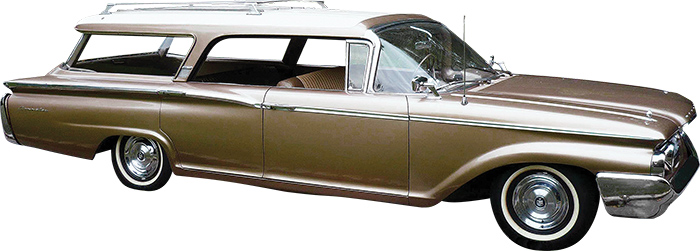
59 Oldsmobile Super 88 in Golden Mist.
The lack of success of the Firebirds contributed to Gibson withdrawing the custom finishing options in ’69. As Ted McCarty recalled in a 1979 interview, these were not popular with distributors. “The guitarists liked to have color options but the distributors didn’t like it because if a dealer had a green one and a gold one, the guitarists wanted blue and red. If he had a blue one and a red one, they wanted a green or gold! They could not sell what they had, so distributors avoided communicating color options to their customers.
Some vintage enthusiasts think that Sparkling Burgundy is also a custom color, and although the metallic tone resembles the Candy Apple Red found in Fender instruments, it was not, strictly speaking, an optional finish. Stanley Rendell, who served as president of Gibson in the early and mid-1970s, recounted the true origins of Sparkling Burgundy
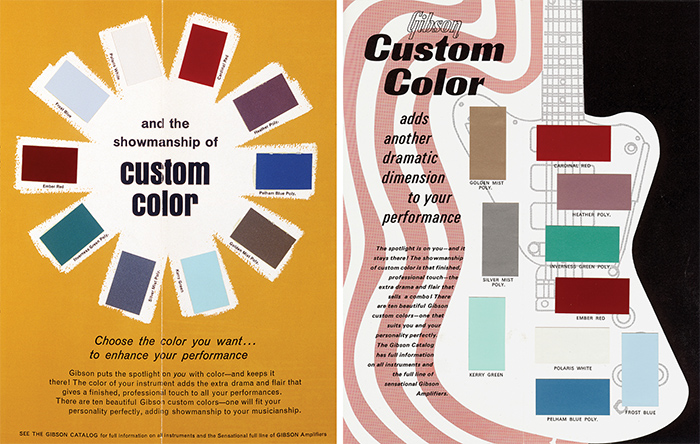

Gibson had a problem making the guitar series 335, “he said in an unpublished interview in 1982 (Editor’s Note: also directed by Duchossoir.)” Apparently, when they laminated the wooden sandwich of the body, they did not have great content control. of moisture in the wood and many cracks were generated, so they filled in the cracks and applied Sparkling Burgundy to cover the repair.
This explains why, as of 1967, the Sparkling Burgundy was listed as a regular finish, not as a custom option, in the fine-line models: ES-355, 345, 335, 330 and EB-2 (D). At the same time, it was offered as standard in the reissue of Flying V and Melody Maker instead of Fire Engine Red. More rarely, the Sparkling Burgundy was applied to SG bodies; Interestingly, practically the Firebird or Thunderbird did not. In 67, Gibson presented the wallnut finish as a regular finish in several models to diversify its traditional offer. The Walnut finish would eventually replace Cherry Red in solid bodies and thin SG-style lines, while later it would also become the basic finish of the Les Paul low-impedance models launched in ’69. At a time when the company was going through a fairly traumatic period after McCarty’s departure and Vice President John Huis, Mr. Rendell and the new Gibson administration raised the (temporary) end of optional custom colors.
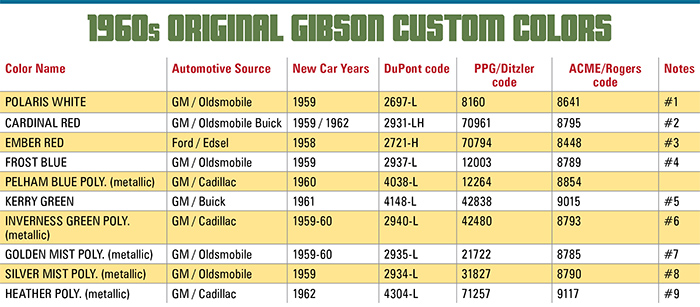

Cadillac Pelham Blue Metallic
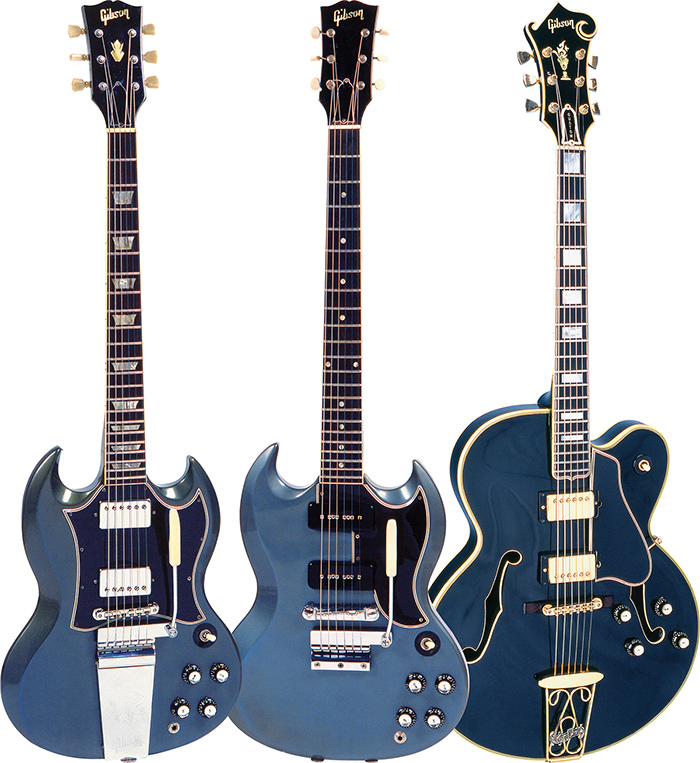
1960 SG Pelham Blue. ES-350TD Customized with a dark blue color. 1960 Gibson ES-350 TD.

